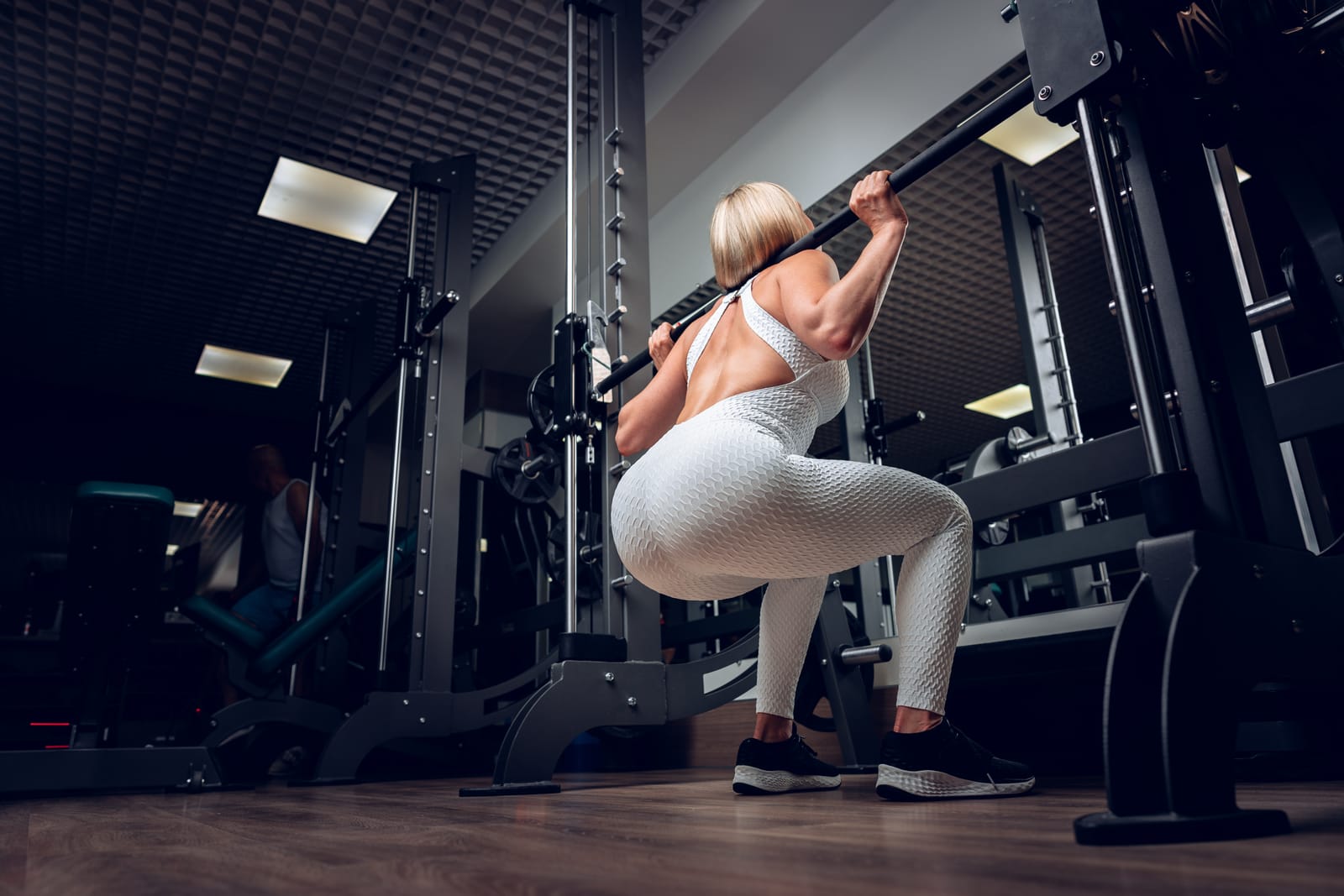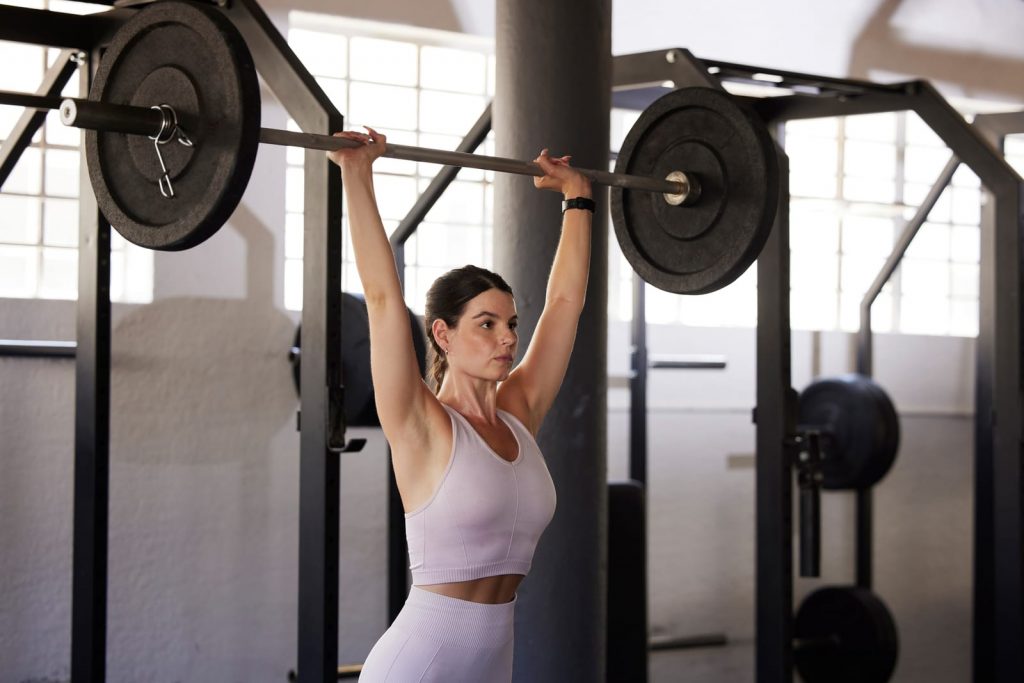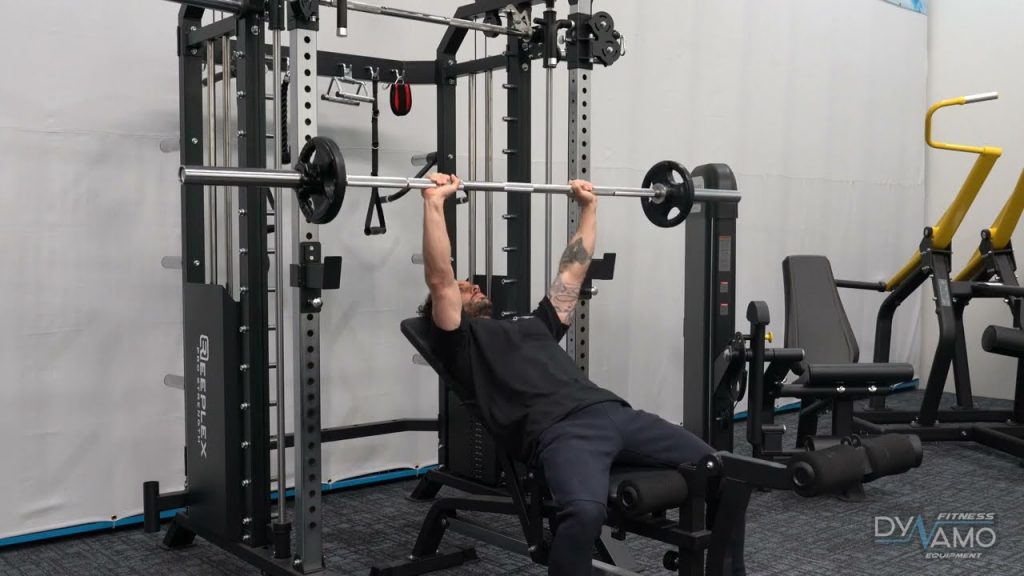
Full-Body Squat Variations & Squat Exercises Using Racks
Did you know a squat rack can be your secret gym equipment for achieving a well-rounded, sculpted physique? Incorporating full-body workouts using squat racks into your fitness routine can provide incredible results. Forget about spending hours targeting individual muscle groups – with just one piece of equipment, you can engage multiple muscle groups simultaneously and maximize your workout efficiency.
You can work your back, front, and core muscles using the squat rack. From squats to lunges to overhead presses, this versatile tool offers endless exercise variations that challenge your entire body. Whether you’re a beginner or an experienced gym-goer, these workouts suit everyone looking to take their fitness journey to the next level. Looking for all-in-one deals? Check out our squat rack packages and order now at Dynamo Fitness Equipment in Australia.
Benefits of Squat Rack Exercises
Target Multiple Muscle Groups Simultaneously
Squat rack exercises are a fantastic way to work out multiple muscle groups simultaneously, maximizing efficiency and saving time. When performing squats, lunges, or overhead presses on a squat rack, you engage your leg muscles and your core, back, and shoulders. This means you’re getting a full-body workout in just one exercise!
Increase Overall Strength and Build Lean Muscle Mass
Incorporating squat rack workouts into your fitness routine can significantly increase strength and lean muscle mass. The compound movements performed on a squat rack require multiple muscles to work together, resulting in more excellent overall strength development. Whether you aim to increase your squat PR (personal record) or tone up your legs, the squat rack is an excellent tool for achieving those goals.
Improve Balance, Stability, and Coordination
One of the often-overlooked benefits of using a squat rack is its ability to improve balance, stability, and coordination. As you perform exercises like squats or lunges on the rack, it forces you to stabilize yourself throughout the movement. This helps strengthen your core and improves your overall balance and stability.
Examples:
-
Squat: Targets quadriceps, hamstrings, glutes.
-
Overhead Press: Targets shoulders and triceps.
-
Lunges: Targets quadriceps and glutes.
Read Also: Essential Gym Equipment: Power Rack – Power Cage – Squat Rack
Total Body Strength: 8 Essential Bodyweight Rack Exercises
To achieve total body strength, mastering these eight essential squat rack exercises is key. These exercises engage all major muscle groups and provide a comprehensive full-body workout. Each exercise targets different body areas, from squats to overhead presses, helping you build strength and improve overall fitness.
Squat Jump Squat
Squats are the foundation of any squat rack workout. They primarily target the lower body, including the quadriceps, hamstrings, and glutes. By adding weight to your squats using a barbell on the squat rack, you can increase resistance exercise and challenge your muscles even more.
Also Check: Reeplex Bench Press & Squat Rack with Lat Pulldown Exercise Video
Overhead Squats
The overhead press is an excellent exercise for strengthening the shoulders, triceps, and upper back. By lifting a barbell from shoulder height to above your head in a controlled manner, you’ll develop upper body strength while engaging your core for stability.

Bench Presses
Bench presses are fantastic for building chest and arm strength. By lying flat on a bench with a barbell above you on the squat rack, you can perform controlled presses that target your pectoral muscles (chest) as well as your triceps.
Also Check: Squat Rack with Lat Pulldown & Low Row Pulley Exercise Video
Bulgarian Split Squats
Deadlifts are exceptional for developing lower back strength along with targeting your hamstrings and glutes. With proper form and technique, this exercise helps improve overall posture while also enhancing core stability.
Front Squats Lunges
Incorporating lunges into your squat rack routine challenges different muscle fibers in your legs while also improving balance and coordination. Front lunges or reverse lunges can be performed using dumbbells or a barbell placed on your shoulders.
Bent-Over Rows
Bent-over rows engage multiple muscle groups simultaneously, including the back muscles (lats), biceps, and rear deltoids. This exercise promotes better posture by strengthening the muscles responsible for pulling movements.
Pull-Ups
Using a squat rack with an attached pull-up bar, you can perform pull-ups to target your back muscles (lats) and biceps. This compound exercise helps build upper body strength and improves grip strength.
Core Exercises
Lastly, don’t forget to incorporate core exercises into your routine. Planks, Russian twists, or hanging leg raises can be performed using the squat rack for added stability and support.
By mastering these essential squat rack exercises, you’ll be well on your way to achieving total body strength. Remember to start with lighter weights and focus on proper form to help prevent injuries. So grab that barbell, step into the squat rack, and let’s get stronger together!
Also Check: Reeplex RM70 Multi-Station Squat Rack Workout
The Ultimate Full-Body Workout in the Rack
Combine various squat rack exercises into an intense full-body workout routine.
Ready to take your workouts to the next level? Look no further than the squat rack for a killer full-body workout. By combining different exercises on the squat rack, you can engage your upper body, lower body, and core muscles all at once. It’s like hitting multiple birds with one stone!
Some of the best exercises you can do on a squat rack include squats (obviously!), back and front squats, deadlifts, bench presses, chin-ups, and more. These compound movements work multiple muscle groups simultaneously, making them highly efficient for building strength and muscle mass.
To create a customized full-body workout routine using the squat rack:
-
Adjust the weights: Start with lighter weights if you’re a beginner and gradually increase as you get stronger.
-
Determine repetitions: Aim for 8-12 reps per exercise to build muscular endurance and strength.
-
Set rest periods: Take short breaks of 30-60 seconds between sets to keep your heart rate up and maintain intensity.
-
Alternate exercises: Mix up upper body and lower body exercises to give each muscle group enough time to recover while working with others.
-
Stay consistent: Consistency is key. Aim for at least three sessions per week.
Key moment is to engage upper body, lower body, and core muscles for a complete strength training session.
The beauty of using a squat rack is that squats allows you to target multiple muscle groups in one session. Here’s how different exercises on the squat rack engage specific areas of your body:
-
Upper Body: Bench press helps develop chest muscles; chin-ups strengthen back muscles; overhead press targets shoulders; dips work triceps.
-
Lower Body: Squats target quads, hamstrings, and glutes; deadlifts engage hamstrings, and lower back; lunges focus on quads, and glutes.
-
Core: Squats and deadlifts require core stability to maintain proper form.
By incorporating these exercises into your routine, you’ll be able to achieve a well-rounded workout that hits all major muscle groups. Plus, the squat rack provides a safe and sturdy platform for heavy lifting, allowing you to challenge yourself and progress over time.
So next time you hit the gym or set up your home gym equipment, make sure to include some of these squat rack exercises in your full-body workout routine. Get ready to feel the burn and see those gains!
Two Effective Squat Rack and Barbell Workout Routines
Looking to get the most out of your squat rack and barbell? We’ve got two killer workout routines that will help you target specific muscle groups or focus on overall strength. These well-rounded routines are designed to enhance your lifting technique while maximizing gains. So grab your barbell and let’s get started!
Routine 1: Targeted Muscle Group Workout
If you’re looking to sculpt specific muscle groups, this routine is for you. Here’s how it goes:
-
Warm-up: Start with a dynamic warm-up to get your muscles ready for action.
-
Barbell Squats: Load up the bar and perform three sets of 10 reps, focusing on proper squat form and depth.
-
Barbell Lunges: Grab the barbell and step forward into lunges, alternating legs for three sets of 12 reps per leg.
-
Romanian Deadlifts: Lower the weight down while keeping your back straight, performing three sets of 10 reps.
-
Bent-Over Rows: Bend at the hips back, keeping your back flat, and pull the bar towards your chest for three sets of 12 reps.
Pros:
-
Targets specific muscle groups for better definition
-
Squats can help improve muscular endurance
-
Provides variety in training routine
Cons:
-
May require more time to complete due to targeted exercises
-
Requires proper technique to avoid injury
Routine 2: Full-Body Strength Workout
For those seeking overall strength gains, this routine has got you covered:
-
Warm-up: Begin with a dynamic warm-up to prepare your body for intense lifting.
-
Barbell Squats: Load up the bar with challenging weights and perform four sets of six reps, focusing on power and control.
-
Bench Press: Lie on a bench with feet flat on the floor, lowering the bar to your chest and pressing it back up for four sets of eight reps.
-
Barbell Rows: Bend at the hips, keeping your back flat, and pull the bar towards your chest for four sets of 10 reps.
-
Overhead Press: Stand with feet slightly wider and shoulder-width apart, and press the bar overhead for four sets of six reps.
Pros:
-
Targets multiple muscle groups simultaneously
-
Builds overall strength and power
-
Efficient use of time
Cons:
-
Requires proper form and technique to avoid injury
-
May be challenging for beginners
So there you have it – two effective squat rack and barbell workout routines that will help you achieve your fitness goals. Whether you’re looking to target specific muscle groups or improve overall strength, these routines have covered you. So grab that barbell, get into the squat rack, and start lifting!
Maximizing Results: Proper Form and Techniques

Learn proper form techniques to prevent injuries during squat rack exercises
One of the most important things you need to focus on is using proper form. This ensures that you perform the exercises correctly and reduces the risk of injuries. To do this:
-
Practice your form: Take the time to learn and practice the correct technique for each movement. Start with lighter weights before progressing to heavier ones.
-
Maintain safety: Always start with a warm-up and stretch before using the squat rack. This helps prepare your muscles and joints for the workout.
-
Find your starting position: Position yourself properly under the barbell, ensuring it rests comfortably on your upper back or shoulders.
-
Keep your feet shoulder-width apart: This provides a stable base of support and allows for better balance during the exercise.
-
Focus on depth: Squat down until your thighs are parallel to the ground or lower, depending on your flexibility.
Master breathing techniques that enhance performance during heavy lifts on the squat rack
Breathing plays a crucial role in maximizing your performance while using a squat rack. Here’s how you can make use of proper breathing techniques:
-
Inhale before descending: Take a deep breath at the top of each repetition before lowering yourself into the squat position.
-
Exhale during exertion: As you push up from the bottom position, exhale forcefully through pursed lips or gritted teeth. This helps stabilize your core and generate power.
Focus on maintaining correct posture throughout each movement for optimal results
Maintaining proper posture throughout your squat rack exercises is essential for achieving optimal results. Here are some key points to keep in mind:
-
Keep your chest up and shoulders back: Avoid rounding your back as this can lead to strain or injury.
-
Engage your core muscles: A strong core provides stability and support during squats and other exercises.
-
Look straight ahead: Fix your gaze on a point in front of you to help maintain balance and alignment.
By following these techniques, you can ensure that you are getting the most out of your squat rack workouts while minimizing the risk of injuries. Remember, practice makes perfect, so take the time to fine-tune your form and focus on maintaining proper technique throughout each movement.
Embrace Full-Body Fitness with Squat Racks
You’ve learned about the incredible benefits of incorporating squats to your workout routine. By performing a variety of exercises using this versatile equipment, you can achieve total body strength and transform your physique. Whether you’re a beginner or an experienced lifter, the squat rack offers endless possibilities for sculpting your muscles and improving your overall fitness.
Now that you have discovered the power of squat rack exercises, it’s time to take action. Start by incorporating some of the essential moves we discussed in this blog post into your next workout session. Remember to focus on proper form and technique to maximize results and prevent injuries. Don’t be afraid to challenge yourself and push beyond your limits – that’s where true growth happens.
So go ahead, shop the best quality squat racks at Dynamo Fitness, and embark on an exciting journey towards achieving full-body fitness. Your dream physique is within reach – all it takes is dedication, consistency, and a little bit of sweat!
FAQs
Can I do squats without a squat rack?
Yes, you can perform squats without a squat rack by using alternative equipment such as dumbbells or kettlebells. However, a squat rack provides added stability and safety when lifting heavier weights, allowing you to push yourself further.
How many times per week should I incorporate squat rack exercises into my routine?
The frequency of incorporating squat rack exercises into your routine depends on various factors such as your fitness goals, current fitness level, and recovery ability. It is generally recommended to include these exercises two to three times per week with adequate rest days in between for optimal muscle recovery.
Should I use free weights or machines in the squat rack?
Both free weights (such as barbells) and machines have their advantages and disadvantages. Free weights engage more stabilizer muscles while machines provide additional support and control. It’s beneficial to incorporate a combination of both in your workout routine to target different muscle groups and enhance overall strength.
Can squat rack exercises help with weight loss?
Yes, incorporating squat rack exercises into your fitness routine can aid in weight loss. These compound movements engage multiple muscle groups, leading to increased calorie burn during and after your workout. Coupled with a balanced diet, regular squat rack exercises can contribute to achieving your weight loss goals.
Is it necessary to warm up before using the squat rack?
Yes, warming up before using the squat rack is crucial for injury prevention and optimal performance. Perform dynamic stretches and light cardio activities to increase blood flow, loosen up muscles, and prepare your body for the intense workout ahead.
